Head in the clouds – feet on the ground
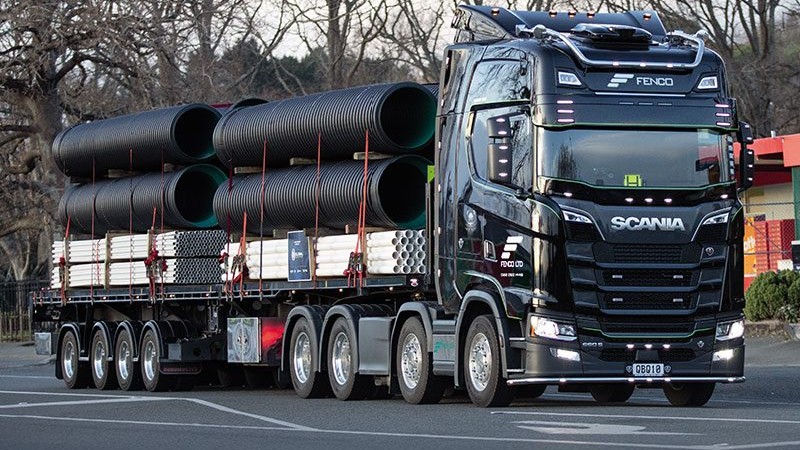
The thought of a commercial airline pilot starting a trucking company in the past five years conjures up as many thoughts as there are seats on an A321neo, or pallet spaces on an HPMV linehaul unit. As is so often the case, the abyss between fact and fiction is always incomprehensibly large, and rarely can the imagination conjure as good a yarn as reality itself.
Sit back, pop the top off a coldy … you’ll like this one.
PART 1
“Is Fenco an acronym for something?” “No, no, nothing like that,” says 39-year-old Glen Stuart, his genuine and guttural laugh instantly setting a light-hearted mood as he wipes his hand over his face. “I wasn’t a bad rugby player back in the day – a prop, about six-foot-six and around 120kg. I decided to shave my head and all that stuff you do, earning me the nickname Uncle Fester. That was shortened over the years, and here we are … Fenco.” The answer to the question was as down to earth as the bloke who offered it. Then he pauses and thinks… “Yeah, I guess the rugby thing could have gone somewhere. I was in the St Peter’s first 15 at 14 years old and ended up playing for Waikato, but in the end, I had other things I wanted to pursue.”
Given the health issues facing a number of elite rugby players post careers, you’d have to say it was a wise move. This robust young bloke from the Waikato would certainly need all his marbles for the journey he was about to embark on. It’s the stuff of a Boy’s Own Annual and certainly inspirational for any young person looking to make the most of life and opportunity.
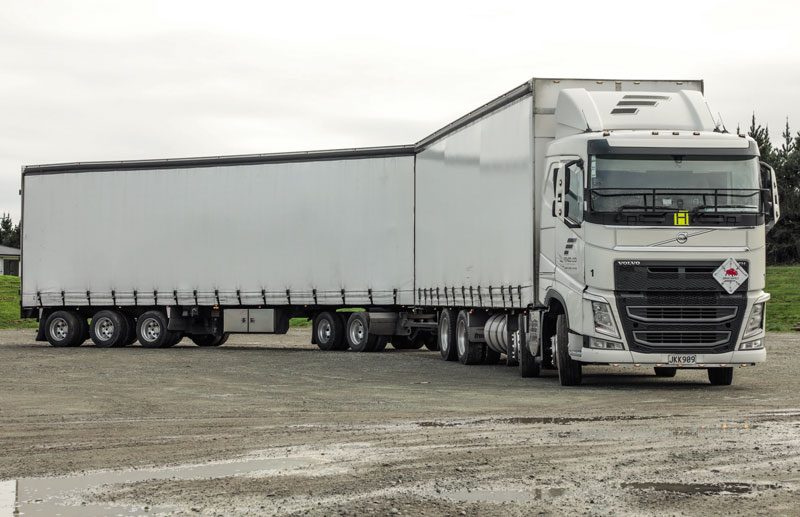
A flying start
You’d have to be honest and say if the average person were asked to describe what popped into their mind’s-eye when someone said the words ‘commercial airline pilot’, they probably wouldn’t conjure up a six-foot-six rugby prop who tips the scales north of 110kg. Any which way you pitch it, Glen Stuart defies the stereotype in the best possible way. Born of solid farming stock in rural Matamata, Glen’s father, an accomplished dairy cow and racehorse breeder, ran a big dairy operation. Glen wasn’t in any way taken with the farm’s core reason for being, instead he was far more interested in the machines and trucks that serviced its needs … and what was circling overhead.
“Yeah nah, farming wasn’t really for me, ” he says with a chuckle. “I loved machines and trucks, and every weekend and holiday you’d find me riding around in the stock trucks and all that. We had trucks in the family too; my uncle, Hylton Cameron, a larger-than-life character who knew everything engines/trucks/ motorsport, was also a farmer from Kiwitahi, and an owner-driver at Daily Freight. From there he went on to drive at LCL in Hamilton. My cousin Craig also worked at LCL in despatch. Yeah, they were very accessible and one way or another I was never far from the cab of a truck.”
Anyone who’s traversed SH27 through the Waikato over the years will likely have noticed the substantial and active aerodrome on the outskirts of Waharoa near Matamata. Being in Glen’s backyard, it’s not surprising his attention had also been drawn upwards.
“A bit of a two-way passion really. I loved the planes and was solo by age 14, and private pilot fully at 16. There’s a flying school there at Matamata too, Walsh Flying School, but I did my initial training at the Aero Club itself under the late John Shuttleworth, a great guy.”
Glen kept his foot – sorry, hand – on the flying throttle as he progressed, and with the necessary student loans lining his pockets, he set course for his commercial pilot’s licence almost immediately after gaining his private.
“I figured flying might lead to better money in my early years, but the truck thing was no less of a goal also. I knew that itch had to be scratched at some point.”
Aged 18, he completed his commercial training, heading for Australia as soon as he could to get flying hours under his belt and start paying down those loans.
“Initially I was heading for Mount Isa in central Queensland to find work driving HaulPac trucks in the mines, but as is always the case in life, timing is everything. I met someone while on a licence conversion course who steered me towards the big cattle stations. Evidently, ‘flying’ Kiwis with a farming background were hugely sought after.”
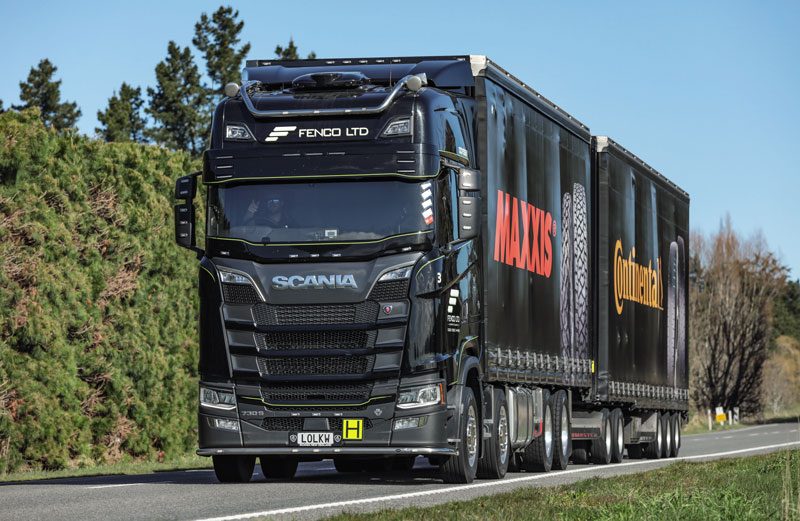
That advice turned out to be gold. Not only did fixed-wing mustering hone the bush flying, it also turned out to have added bonuses!
“I got a job with Stanbroke Pastoral, at the time one of the largest landowners in the world, if not the largest. They owned Nappa Merrie in far West Queensland, home of the ‘dig tree’ from the original Bourke and Wills expedition across Australia. I learnt the intricacies of station and ag flying from ‘Bomber Johnson’ a legend in the channel country, someone straight out of the storyline of a Slim Dusty song!
“Stanbroke also owned Tanbar and Davenport Downs stations in Central Queensland, Alroy Downs on the Northern Territory’s Barkley Tableland, along with several others, and feed lots on the east coast. It was a huge operation. There were 14 planes in the fleet, including 182s, 206s (Cessna), and a Beechcraft Baron the boss flew around in. Interestingly, no planes were based at Alroy Downs because the pilots never really got on with the station manager there. John Stafford was his name, a hard bloke who used to complain about the pilots needing to rest, refuel, and minor things like that: ‘Rest when you’re done, and there’s endless empty road, if it’s running out of fuel, land on one of them… And if you don’t like it, you can @$#!<* off!’ He and I got on really well, so I did a lot of flying there. I loved it. The Barkly Roadhouse was within driving distance too, meaning we had the added bonus of a pub within an hour or so, not a day’s drive.
“We had sign-off to do basic maintenance – oil and filter changes, things like that. However, when they needed a proper lookover the planes went to Longreach in Queensland. Those trips were always a welcome spell and a memorable couple of days, I can tell you. It also meant we had a chance to eat something other than beef. Chicken was normally only reserved for Christmas Day.”
Timing again played a big part in Glen’s run of adventure. It was just after the turn of the century and the Channel Country had been in years of severe drought, so the stations in that region were destocking at a phenomenal rate, the cattle heading to the lush Northern Territory.
“Obviously, the intensive side of the flying was seasonal, so other skills were needed – sinking bores, welding, fencing, machine operating – but having got my MC licence also, truck driving was also an option. It was awesome.”
That meant once flying duties were completed, Glen was into a triple road train, both in the station paddocks and on runs up to the live cattle export boats in Darwin. C500 Kenworths and Mack Titans were the tools of choice in the era.
Occasionally, work took Glen through Mt Isa, where unknown to him, his future wife worked as a soil technician for an engineering company in the mines there, with a bit of bar work at the local pub chucked in for good measure. Their paths wouldn’t cross until some years later.
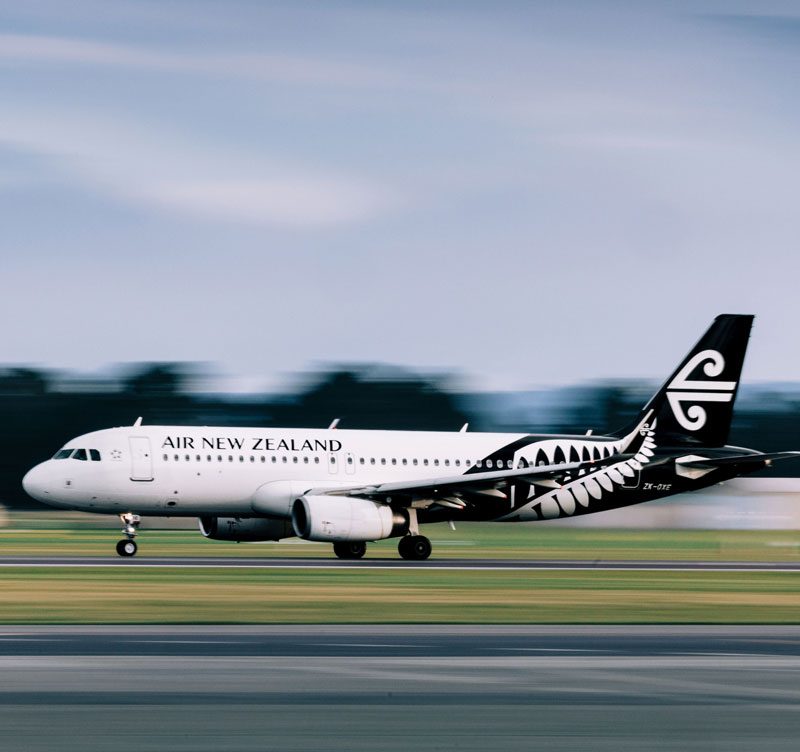
Home and away … and home
From the pastoral flying, Glen moved onto charter work in 2003 for Slingair based out of Kununurra in the top of Western Australia. The role largely involved ferrying people and equipment working in the gold and diamond industry around Arnhem Land and the Kimberley regions, as well as Aboriginal community work. Again, seasonality meant varied work consistency so, in time, Glen headed for New Zealand where he took a job at Blenheim-based Sounds Air.
“I was the chief pilot at Sounds Air for a spell. There was a pathway established between Sounds Air and local company Vincent Aviation, whose work included government, industry, and airline work in New Zealand, Australia, Papua New Guinea, and Myanmar. The owner of Vincent Aviation was Peter Vincent and both he and his son Tom are truck nuts. Peter even owns a Leyland Hippo, so you can imagine how well we all got on.”
The Vincent Aviation job was based in Wellington and had incredible variety. Charter and airline work in New Zealand one week, and mining transfer flights into the Tanami Desert the next from a large base Vincent Aviation had established in Darwin. In that time there was also the occasional run down the road to Alice or Kununurra for NTFS (Northern Territory Freight Service) or Shaw’s Darwin Transport. But it was in Wellington that Glen finally met his wife Abby, who was there working in the research division of the Ministry of Education.
The Vincent job led to Glen’s first foray into commercial airliner work at Cathay Pacific, based out of Hong Kong. He worked at Cathay for a decade between 2006 and 2016.
“In my time there, I worked my way into ultra-long-haul, long-sector flights like Hong Kong to New York in Airbus A330s, 40s, and 340-600s. I stayed up there for 10 years and I’d have to say in hindsight they weren’t the easiest outfit to work for. Incomparable to Air New Zealand. Honestly, with no ‘BS’, our home airline is a really great company to work for.
“I enjoyed my time up there though, I got back into a bit of footy, social that is. Very social actually,” he says with a laugh.
Back in New Zealand in 2016, Glen began flying for the Koru – Air New Zealand.
As you can see, through all these adventurous airborne years, Glen made sure he never lost contact with the other industry he loved, and arriving home gave him the opportunity to get involved again.
“When we came home, Christchurch was the place we wanted to settle down in. Once here I was able to get into some relief driving in my downtime. I worked for Greg Mitchell, Dynes, Big Chill and TR Group, helping TR with relocations and what not. TR is a fantastic company to work with and have been extremely helpful to us. It’s a relationship we want to maintain.
“I had every copy of New Zealand Trucking growing up, and I knew the companies and what they did. Super passionate. The trucking business was a decade or more in the making, always thinking and scheming about where there might be a niche and an opportunity. It’s a bloody tricky industry and a difficult one to make money in. I had zero interest in just jumping into the pool and taking anything that came along, scrapping in the open general market so to speak.”
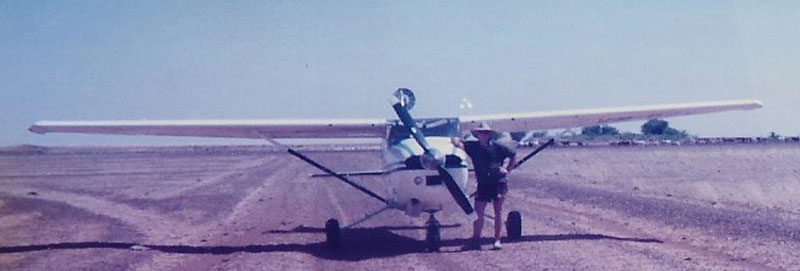

Eyes in the air, and an ear on the ground
Glen and his family were settled back into life in New Zealand after being expatriates for well over a decade. He was again able to partake in the two things he enjoyed most – big planes and big trucks.
The first flickers of life on the Fenco ECG came about in 2019 of all years. A tyre distributor got in touch about a new truck run they were planning.
“Sherman Frizzell is the national distribution manager and he approached us about the potential of a shared driving role utilising a TR unit. The run consisted of a weekly Christchurch-Auckland, Christchurch-Invercargill run.
“I wondered if this could be just the thing I was looking for. Calculations done, proposal in hand, I made a pitch to Tyremax for putting the truck on ourselves.
“Tyremax was just the right company. They run an exceptionally tidy business on tight, customer-focused processes and service requirements. Their distribution chain has to run better than clockwork. They also understand what it takes to deliver on their promise. Aviation is an incredibly process-heavy and specific business, and so coming from that to a customer who has absolute requirements fitted perfectly. It was a meeting of like minds.”
Hands shaken, Fenco was up and running. “They took a huge gamble on us and we’ll be forever grateful for that.”
The first thing needed was a truck and trailer. Glen bought an ex-Andrew Douch curtainside Volvo FH540 8×4 and five-axle trailer from James Worsnop at NZT Group.
“NZT was really good to deal with and sorted us out with what has been an amazing machine. It had done north of a million kilometres when we bought it, but it’s been faultless. It’s the truck that stood us up really and it’s still going strong. No.1 is on double North Islands this week actually – it just keeps on plugging away. On the Tyremax work we only run at 43 tonne all up, so it’s not overly taxing on the gear.
“At the time we bought the Volvo I ordered the 730S Scania with Roadmaster body and five-axle trailer. The reasons behind the Scania were many and varied. Delivery time frame with the global supply chain disruption starting to become apparent, our preference for European gear, and a bucket list personal desire to own a V8 Scania if I’m being totally honest. That truck turned up on time, and it’s been a fantastic machine also.
“We operate on specific timetables, needing to be right where we need to be when the customer expects us to be there. High-spec machines play a huge role in making that happen and they make good sense even at low gross weights. The 730 is carting 140 cubic metres all of the time, runs at 2.4kpl, and we get about 120,000km out of a set of Continental drive tyres. Quality products are worth the money; we only run Continental and Goodyear rubber.”
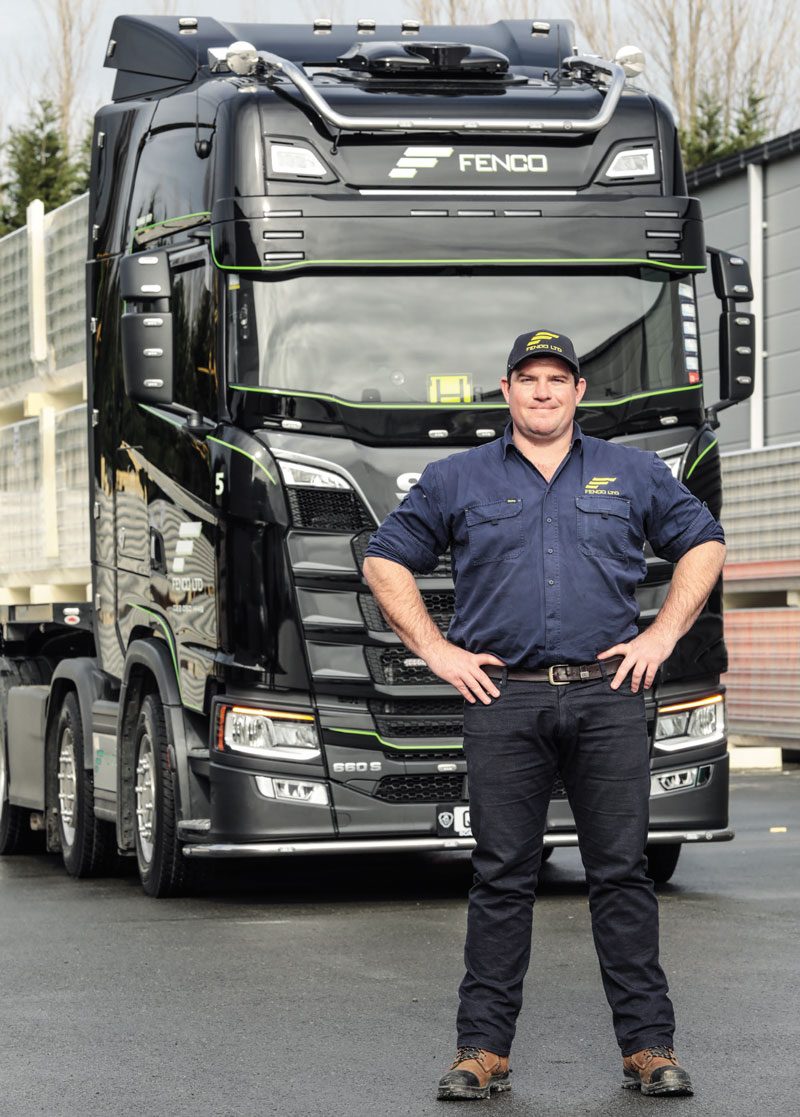
A bug!
2019 was an insanely normal year, not that we knew that at the time. As it drew to a close we all began to wonder a little, and by the time the clock struck midnight on 31 December, many feared what on earth lay just around the corner.
“What a time to stand up a new business,” says Glen on reflection. “When Covid hit I was expecting to be laid off at Air New Zealand, but that never happened. Finding our feet in the business right at the time when the global supply chain self-destructed was certainly not without its challenges.
“We were able to make use of some of the Air New Zealand guys, including my old mate Tom Vincent who had been put on furlough from Air New Zealand during Covid and needed something; that was interesting. It proved like any occupation – years of experience doesn’t always correlate with superior performance. You can have someone who’s driven trucks for years and years but you can’t tell them anything, or tell them how you want things done. Give me a guy who’s level-headed and cautious any day of the week. It was an interesting time with an interesting bunch.”
Amidst the mayhem Fenco grew legs, and reputation. Another Volvo was bought from Motor Truck Distributors in Palmerston North, this time an ex-Douch FH16 700 8×4 tractor to tow a flat deck quad semi. Again, a machine that proved to be a great buy.
“We won some more work, this time supporting the construction industry, requiring long semis.
“We run Roadmaster gear, they have been outstanding to us. Aaron Forde is our man there. When we ordered the 730, I asked people in the industry about bodies and trailers and was pointed toward Roadmaster. We’ve found them to build strong, reliable, well-presented gear, and Aaron has again been great to deal with.
“The new 660S 8×4 tows a Roadmaster 15.7 quad with a 4.0m extendable rear taillight bar, the second trailer with the extendable light bar. They just make the cartage of the long OD stuff that much easier.”
Rounding out the fleet is an FM Volvo and a MAN TG3 that usually tows either a 34-pallet B-train or trombone semi. “All going well, by the time we get to the end of 2024, there should be five new Scanias in the fleet.”
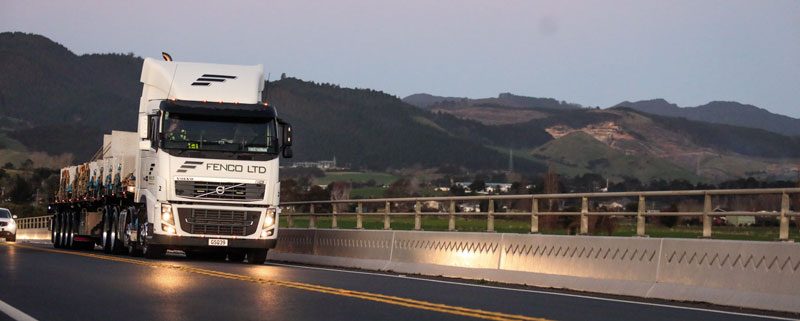
Wings and wheels
Talking to Glen, the preference for European gear has an interesting twist. As it turns out, the European versus US thing extends well beyond trucks, and similar variance for all the same reasons can be found aloft.
“Noise and vibration are incredibly fatiguing. It’s the same in planes as it is in trucks – in fact, that constant single tone noise is probably worse in planes than trucks.
“Airbus is typically European, sharing a lot of the same traits with the trucks and cars; quiet, smooth, sophisticated. The new A321neos at Air New Zealand are incredibly smooth and frugal. They’re also more automated. When Airbus brought out the joystick controls over traditional yokes, all the old-school pilots said they were a ‘pansy’ plane. But the joystick gives you more room in the cockpit, is so easy to use, and allows for a tray to be pulled out for completing paperwork or as a table for dinner.
“It’s just like those who argue the manual gearbox over the AMT. As much as I love taking a loaded Kenworth over Arthur’s Pass and honing those technical driving skills paired with several hundred gear changes, my preference is for the I-Shift or Opticruise these days.
“I’ve flown big Airbuses on long-haul routes, and you can get out after a long sector and feel you can jump straight back in and head back. They’re just quieter and smoother than their US counterparts. Likewise, the trucks. The 730 is effortless, and as I say to our team, at the weights we run they should be driving it with their thumbs for all but the final stopping event. If you can’t, you’re doing something wrong. They’re powerful, quiet, and smooth. It’s why we go for the big cabs also. Give the guys room, make it comfortable when you’re on a rest.”
Interesting.


A new vector
Nothing is better for your business than to have a sharp cookie from the outside cast an eye over it. It’s not necessarily cause for pessimism either, sometimes the bouquets bolster and inspire, and the probing questions should only ever invoke thought and discussion.
The same applies at industry level. What makes Glen’s story unique is the whole trucking journey has been a backdrop to a distinguished commercial flying career. They’re an interesting union, and it certainly gives him the ability to cast an observational eye over trucking. Trucking’s an industry that attempts (when it suits) to convey professionalism, and here we have one of our own, simultaneously operating at the highest levels in a discipline many would see as the yardstick for professionalism in transport.
“Yeah, it’s interesting,” says Glen, again deploying the customary wipe of the face as the thoughts, comparisons and conflicts flow into his head. “I guess the first thing I’d say again is involvement in the trucking thing has been a decade in the making, and that in itself says a lot. It’s a tricky and competitive game and jumping into the general pool and scraping for anything is not a good idea. I’ve never had any interest in that.
“Again, we were so lucky to find our first customer, Tyremax, who ran a tight ship and understood what their service requirements involved from the supplier’s perspective. Had we not got their work, we’d likely still be watching from the fringes, looking for the opening we wanted.
“We’ve grown from that start and grown on the back of tight processes and service promises we know we can keep. We could have taken on a heap more work, but we don’t, and I think ‘no’ is a word trucking struggles to say. The ‘yes at all costs’ culture of old – it’s not us. Yet we’ve won work, not by going out and hawking for it, but by people coming to us because they’ve found themselves in the same place Tyremax did, and have had enough. Then someone’s pointed them at us.
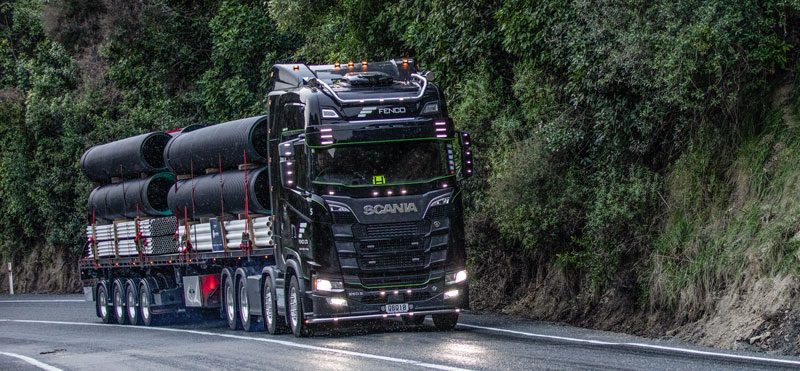
“We have three or four customers who we service absolutely. Everything we do is based around their service promise. If there’s other work we can do that suits, then we will – sometimes – take it, but never to the detriment of our anchor customers, the people who put consistent and ultimate faith in us. ‘No’ is very much in our vocabulary for work outside theirs.
“And I think compliance is driving the industry more into the ‘what’ and ‘who’ track. ‘What’ is it you do, and for ‘who’. The point there being the days of bucking the system and operating either completely and/or partially outside the compliance envelope are fast disappearing. Trucking will continue to get tighter and that will impact the ‘all things to all people’, only ever say ‘yes’ mentality. You have to figure out who you are, what it is you do, and who for. Once you decide that, you can service your customers without compromise.
“If I think of aviation, that’s an incredibly regulated industry, and it has to be. No one would disagree. If some process or procedure fails to occur inside aviation, it causes massive disruption and shit stops everywhere, believe me. As compliance continues to tighten in road transport, you’ll see a similar thing happen, and the evolutionary outcome will be a decision to just do it right and prevent the disruption. In the end, that’ll be to the benefit of the industry on many fronts.
“Having said all that, the great thing about trucking is the continued need for lateral thinkers. I’ll get hung for saying this, but more truck drivers would make great pilots than the other way around. Truck driving still requires you to figure out stuff when you’re out there on your own, whether it’s the load, the truck, accommodating the public and those around you, or the management of your own time. I still have the odd mate from aviation, ones who were here in Covid, coming back for a drive. Tom has a lash when he wants to, he did a run north the other week – took the Scania up.
“In the course of a normal day, there’s no space for that type of thinking in aviation. Every contingency and outcome is accounted for, ‘T’s crossed and ‘I’s dotted. I don’t think trucking will ever find itself without that gut need to think on the fly, out in the day-to-day operations. It’s what makes it such a neat industry to be a part of.”


It must be a full-on existence and at some point we all look in the mirror, sigh, and say ‘why the hell…?’ The question then is, is it all you’d hoped it would be?
“Absolutely, I love it. As I said earlier, that ability to think laterally as only trucking can give you.
“But I’m also immensely proud of the business, that we provide livelihoods for our valued staff, and hopefully an interesting and varied workplace. We’ve got a great crew; it’s the people who make a company successful in the end. My operations man Duncan McFarlane keeps things on the ground running smoothly when I’m not on the ground. It’s a team effort and it just wouldn’t work without great people.
“Abby and I have three children, Greta (14), Alexandra (11), and Jonathan (9). Whether the industry is for them, who knows? They’ll carve their own journeys, but I’m loving mine at the moment, that’s for sure.
“At the end of the day, given the choice to take one of the trucks into Central Otago on a beautiful autumn morning or a plane across the Tasman, I’d take the truck, no question at all.”
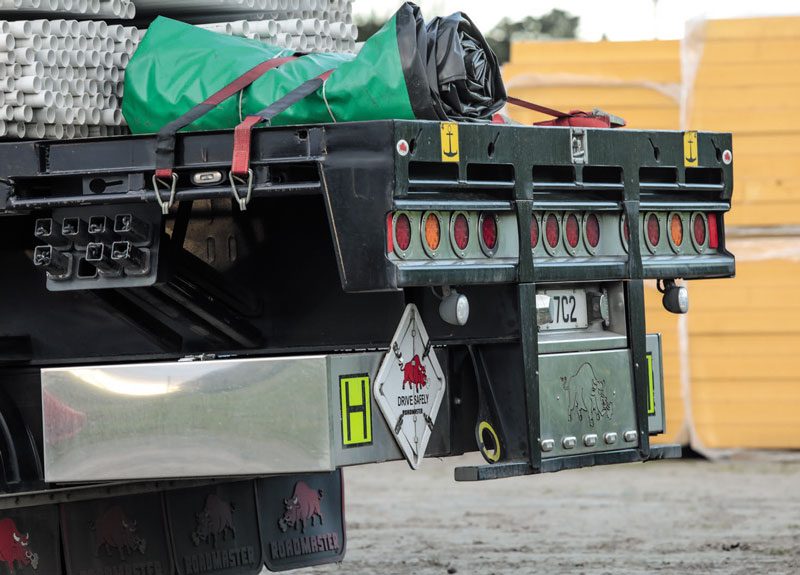
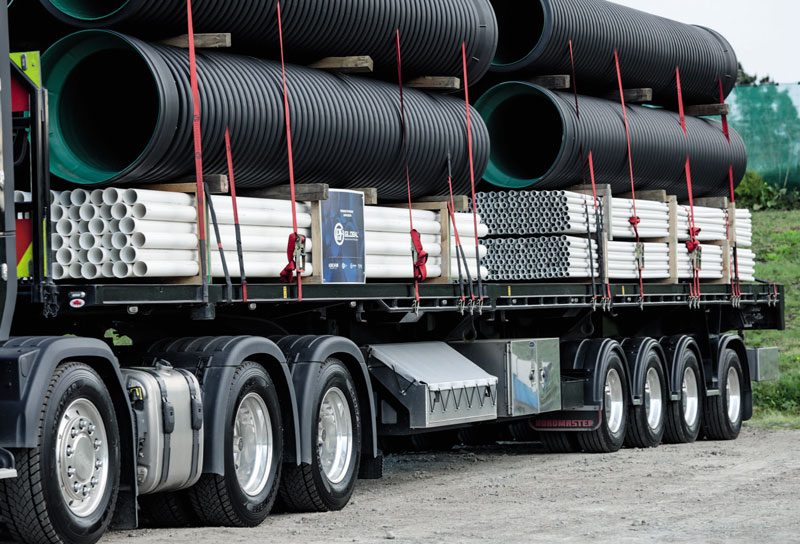
Quick reads from Tests
Read more
The right man for the job
0 Comments29 Minutes
Legendary ambition
0 Comments36 Minutes
Hard Fought!
0 Comments40 Minutes
Postal Trifecta
0 Comments29 Minutes







